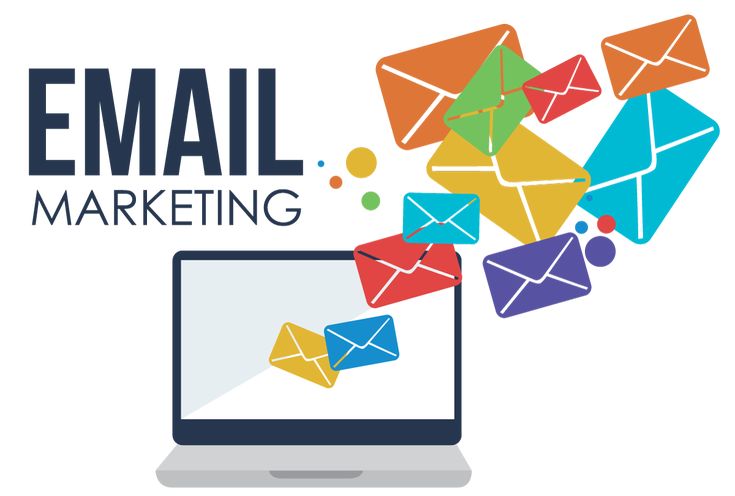Introduction
Email marketing isn’t dead—it’s smarter than ever. In fact, despite new channels like social media, over 4.3 billion people worldwide still use email daily. But here’s the catch: inboxes are overflowing. Your audience is bombarded with promotional emails, newsletters, and offers every single day. If your emails don’t stand out, they’ll likely end up ignored, unopened, or even worse—sent straight to spam.
So how do you cut through the noise? The answer lies in artificial intelligence (AI). AI is reshaping the way marketers write, send, and analyse emails. From crafting personalised subject lines to predicting the best time to send, AI takes the guesswork out of email marketing. Instead of spending hours testing and tweaking campaigns, you can let data-driven insights do the heavy lifting.
This blog will guide you through how to master email marketing in the age of AI. You’ll learn practical strategies, tools, and examples to build stronger connections with your audience and get real results. Whether you’re a small business owner, freelancer, or marketing professional, this guide will help you:
- Understand how AI changes email marketing.
- Write smarter, more personalised campaigns.
- Automate repetitive tasks without losing the human touch.
- Use AI tools to improve open rates and conversions.
By the end, you’ll know exactly how to blend email marketing and AI into a powerful strategy that engages readers and grows your business. Let’s dive in.
1. Why Email Marketing Still Matters in the AI Era
You might wonder: with social media, chatbots, and new platforms, why stick with email? The truth is, email remains one of the highest ROI channels for businesses. For every $1 spent on email marketing, the average return is $36.
Here’s why email still wins:
- Direct access: Unlike social media algorithms, email lands straight in your audience’s inbox.
- Ownership: Your email list belongs to you, unlike followers on rented platforms.
- Personalisation: Emails can be highly customised for each subscriber.
Now, enter AI. Artificial intelligence makes email marketing even more powerful. With AI, you can:
- Predict customer behaviour: Know who’s likely to click or buy.
- Automate segmentation: Group subscribers by interest or purchase history.
- Craft engaging subject lines: AI tools can analyse millions of options.
- Send at the perfect time: AI predicts when users are most likely to open.
Example
Imagine you run an online store. Without AI, you send the same newsletter to everyone at 9 AM. With AI, you send personalised emails: one customer gets a discount on sneakers at 7 PM, another gets a reminder about their
abandoned cart at noon. The result? More clicks, more sales.
Comparison Table:
| Without AI | With AI |
| Generic subject lines | Personalised subject lines |
| Same time for all | Optimised send times |
| Manual list sorting | Smart segmentation |
| Guesswork | Data-driven insights |
Takeaway: Email marketing is far from outdated. It’s evolving—and AI is the engine driving this evolution.
Read Also- AI Content Creation: Should Marketers Embrace Or Fear It?
2. Personalisation at Scale with AI
Personalisation is no longer limited to using someone’s first name. Customers expect more. They want emails that feel like they were written just for them. That’s where AI steps in.
How AI Improves Personalisation
- Behavioral Analysis
- AI studies browsing habits, clicks, and purchases.
- Example: If a customer browses laptops, AI suggests accessories in follow-up emails.
- Dynamic Content
- Instead of a single static template, AI generates multiple email versions.
- A fitness app can send diet plans to some and workout tips to others—automatically.
- Product Recommendations
- Similar to Netflix or Amazon, AI recommends items based on history.
- Emails showcase products customers are most likely to buy.
Benefits of AI Personalisation
- Higher open rates.
- Better click-through rates.
- Increased customer loyalty.
Simple Step-by-Step Guide
<!--🚀 New Batch Starting Soon!
Don't miss your chance to enroll now.
- Collect subscriber data (purchase history, clicks).
- Choose an AI-powered email platform (e.g., Mailchimp, Klaviyo, HubSpot).
- Set rules for personalisation (e.g., “Send sports gear emails to users who buy running shoes”).
- Test results and adjust.
Quick Example
- Without AI: “Hi Sarah, here’s our latest newsletter.”
- With AI: “Hi Sarah, we noticed you loved our yoga mats. Here’s 10% off our new eco-friendly yoga blocks!”
Takeaway: With AI, personalisation goes beyond names—it delivers experiences tailored to each subscriber.
3. Smarter Subject Lines and Copywriting with AI
The subject line is the first thing your audience sees. If it’s boring, your email won’t get opened—no matter how great the content inside is.
AI tools like GrammarlyGO, Jasper, and Copy.ai can help you write irresistible subject lines and copy.
Why AI-Generated Subject Lines Work
- Emotion-based analysis: AI predicts which words trigger curiosity or urgency.
- A/B testing at scale: Test multiple subject lines instantly.
- Tone adjustment: Match your brand’s voice—casual, formal, or playful.
Examples:
- Without AI: “New arrivals in store”
- With AI: Just dropped: Styles you’ll love before they sell out”
Using AI for Email Copywriting
- Short and punchy sentences.
- Personalised greetings.
- Clear call-to-action (CTA).
Pro Tip: Combine human creativity with AI efficiency. Let AI suggest options, then tweak them to match your brand personality.
Quick Checklist for Copywriting with AI
- Define your audience.
- Let AI generate 3–5 subject line options.
- Choose the top 2 and A/B test.
- Use AI to draft body content, but add personal touches.
Takeaway: AI won’t replace your creativity. Instead, it acts like a smart assistant that helps craft subject lines and email content designed to grab attention and drive clicks.
4. AI-Powered Automation and Workflows
Automation has always been part of email marketing. But AI takes it to the next level. Instead of pre-set rules, AI-powered automation learns and adapts.
Examples of AI Automation
- Welcome Series
- AI decides the best time to send the first email after signup.
- It adjusts follow-up emails based on whether the subscriber clicked.
- Cart Abandonment Emails
- AI predicts which customers are likely to complete the purchase.
- It times reminders with urgency-based subject lines.
- Re-engagement Campaigns
- AI identifies inactive subscribers.
- Sends personalised “We miss you” offers.
Benefits of AI Workflows
- Saves time with less manual setup.
- Responds in real-time to customer behaviour.
- Increases revenue through better targeting.
Step-by-Step Example: Cart Abandonment
- Customer adds a product to the cart.
- Leaves without purchase.
- AI analyses customers’ buying history.
- Sends one of three emails:
- Discount code for bargain shoppers.
- Reminder email for regular customers.
- Urgency-driven subject line for impulse buyers.
Table: Traditional vs. AI Automation
| Traditional | AI-Powered |
| Pre-set schedule | Learns from behaviour |
| Same message for all | Personalized workflows |
| Manual testing | Continuous optimization |
Takeaway: AI automation is like having a 24/7 marketing assistant that adapts to every subscriber’s journey.
5. Measuring Success with AI Analytics
One of the biggest challenges in email marketing is understanding what works and what doesn’t. AI-powered analytics make this easier by providing insights you can act on.
How AI Enhances Analytics
- Predictive analysis: Forecasts future engagement.
- Heatmaps: Shows which parts of your email get the most clicks.
- Engagement scores: Ranks subscribers based on activity.
- Churn prediction: Identifies who’s likely to unsubscribe.
Key Metrics AI Tracks Better
- Open rates by time and segment.
- Click-through rates based on content type.
- Conversion rates are tied to customer behaviour.
Example:
You send a newsletter with three sections: blog posts, products, and testimonials. AI shows that 70% of clicks are on the product section. This tells you where to focus next time.
Actionable Steps
- Use an AI-powered platform like HubSpot, Klaviyo, or ActiveCampaign.
- Review dashboards regularly.
- Adjust content based on insights (e.g., highlight products more if they drive conversions).
Pro Tip: Don’t just track opens. Focus on metrics that align with your business goals—like sales or sign-ups.
Takeaway: AI analytics help you understand your audience better, refine your campaigns, and grow faster with data-driven decisions.
Conclusion
Email marketing is far from old-fashioned—it’s smarter, sharper, and stronger with AI. Instead of blasting generic newsletters, you now have tools that allow you to personalise at scale, write engaging copy, automate workflows, and measure success in real-time.
Let’s recap the key takeaways:
- Email is still the king of ROI. With AI, it becomes even more powerful.
- Personalisation is more than a name. AI creates experiences tailored to behaviour and preferences.
- AI copywriting boosts engagement. Smarter subject lines and content lead to higher open rates.
- Automation adapts. AI-powered workflows save time and drive results.
- Analytics guide growth. Data-backed insights help you improve every campaign.
The bottom line: mastering email marketing in the age of AI isn’t about replacing the human touch. It’s about enhancing it. AI handles the heavy lifting, so you can focus on creativity and strategy.
Now it’s your turn. Start small—experiment with AI subject line generators, personalised recommendations, or predictive analytics. Gradually build AI into your email marketing strategy.
If you do, you’ll not only stay ahead of the curve—you’ll create meaningful, lasting connections with your audience.


